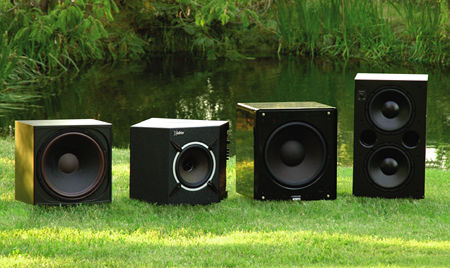Way Down Deep III
Details on the testing methodology can be found here.
Part One of this article can be found here.
Part Two of this article can be found here.

The four subwoofers profiled in this, the final installment in our survey, will likely be of keen interest to home theater aficionados who want to go Way Down Deep without going way out on a limb. Each of the four high-end contenders profiled here consumes less than 2.9 square feet of floor space and costs less than $4000, including crossover and power amplifier.
Note: Figs. A1 through D5
Technically referred to as spectrograms, the waterfall graphs shown here provide a picture of how deep and loud each subwoofer managed to play several particularly treacherous 10-15-second clips from a few selected soundtracks and CDs. The main speakers were disconnected and the subwoofer level increased to a point just 1dB below the onset of audible distortion—whether hashiness, fuzziness, fluttery noises, cardboardy thwock sounds, or other noticeable fault. The result was recorded with the microphone 2m away from the subwoofer. In these displays, time flows downward, like water, with each faint white horizontal line marking 1 second. The frequency range spans from 0Hz on the far left to 80Hz on the far right. The color indicates playback volume over a 40dB range, from dark blue (very soft), increasing through green, yellow, and finally to burgundy (very loud).
- Log in or register to post comments






























































